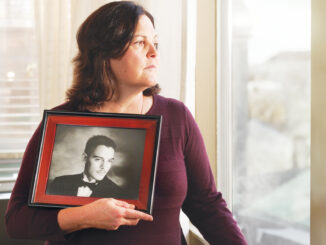
Frequently asked questions about medication take-back bins
by Anne Stokes
Here are answers to some frequently asked questions about the medication take-back bin program, provided by the California Product Stewardship Council:
How do safe disposal drug take-back bins benefit the communities they’re in?
Take-back bins provide convenient and secure disposal options for unwanted medications. In the past, users were encouraged to flush medications down the drain or throw them away in the trash, both of which can contribute to pollution. Stockpiling medications in the home can also contribute to intentional misuse or accidental poisonings.
What can be disposed of in the bins?
Bins accept prescription and over-the-counter medications, medical patches, as well as pet medications and medicated ointments and lotions tightly sealed in their original containers. Disposal requirements are posted at each bin location.
What materials cannot be disposed of in the bins?
Community residents are advised not to put illegal controlled substances in the bins, such as marijuana, heroin, or LSD, for example. For safety reasons, medical sharps and needles, compressed cylinders such as asthma inhalers, chemotherapy, or radiopharmaceuticals should also not be disposed of in bins. Medical devices such as thermometers also cannot be disposed of in the bins. Sites will not be held responsible for materials deposited into bins.
What locations are suitable to host a take-back bin?
Pharmacies, hospitals with pharmacies, and law enforcement locations are suitable locations as they can provide proper management and security for materials.
What are sites responsible for handling?
Sites are responsible for maintaining bins and ensuring they are securely located inside. Once full, sites are responsible for scheduling material pick ups and educating customers on what materials they can responsibly dispose of. Once the bin is full, site staff is responsible for removing and sealing the package and liner for pick up.
Host sites may also be responsible for a monthly service fee for the collection and proper disposal of materials. Although costs may vary depending on a number of factors, the estimated service fee is $165 a month.
Who can we contact?
Sites can contact Drug Takeback Solutions Foundation and MED-Project.
To find a bin near you, go to medtakebackcalifornia.org.
Read more stories about med bins in California’s North Coast, Orange County, Rural Mountains and San Diego County.
Brought to you by the California Drug Take-Back Program and the California Product Stewardship Council.
Recent facebook posts from California Product Stewardship Council

The California Product Stewardship Council (CPSC) is a powerful network of local governments, non-government organizations, businesses, and individuals supporting policies and projects where producers share in the responsibility for managing problem products at their end of life.
CPSC is California’s thought leader and expert on Product Stewardship and the Extended Producer Responsibility (EPR) movement.
EPR enjoys the support of more than 26 million Californians. That’s nearly 70% of the state's population! Nearly 150 resolutions have been passed by California local jurisdictions and organizations supporting a more sustainable and toxic free environment through product stewardship. CPSC works closely with companies who have redesigned products for reuse as well as those who have established pilot or permanent collection programs with some sharing of costs with others in the product chain.
California Product Stewardship Council



